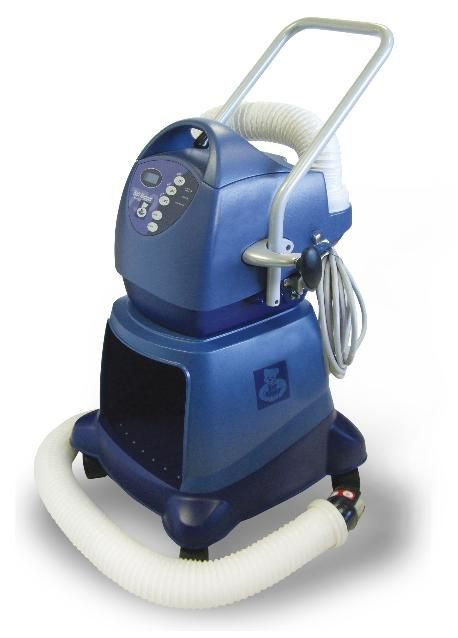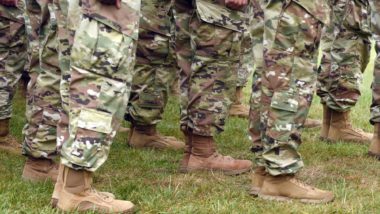Top Class Actions’s website and social media posts use affiliate links. If you make a purchase using such links, we may receive a commission, but it will not result in any additional charges to you. Please review our Affiliate Link Disclosure for more information.

Arizant Healthcare and its parent company, 3M Company, are facing a growing number of lawsuits alleging their Bair Hugger warming blankets caused severe infections.
According to these Bair Hugger lawsuits, many patients had recently undergone either knee or hip replacement surgery where surgeons used the Bair Hugger device to keep patient warm during their procedures.
In one of these recent Bair Hugger lawsuits, Plaintiff Tawas R. allegedly suffered a post-surgery joint infection called Methicillin-resistant Staphylococcus aureus (MRSA), following a hip replacement surgery in June 2014. Tawas’ infection was antibiotic-resistant and required two additional surgeries to remove the implant and clean the infection, according to his lawsuit.
The other Bair Hugger lawsuits filed against 3M claim similar allegations, with the plaintiffs alleging that the company had known about the risks since 2009.
What is the Bair Hugger Warming System Used For?
The 3M Bair Hugger is commonly used during hip and knee replacement surgeries across the country. The medical device works by forcing warm air to help regulate the patient’s body temperature while under anesthesia. A number of patients have reported developing infections in the surgical sites, allegedly due to the air suction mechanism of the device.
The Bair Hugger inhales air and raises the temperature of the air before blowing it onto the patient’s body. Some lawsuit plaintiffs allege that this intake of air draws bacteria and other contaminants from the operating room, thereby exposing the surgical site to potential infection, despite being in a completely sterile environment.
Studies Raise Concerns about Forced-Air Warmers
Studies of forced-air warmers, including the Bair Hugger, have not conclusively determined they cause surgical site infections (“SSIs”), but the studies raise concern about their potential risks.
A 2011 study, “Forced-air warming blowers: An evaluation of filtration adequacy and airborne contamination emissions in the operating room,” published in the American Journal of Infection Control, found 58% of the forced-air warmers studied (including the Bair Hugger) produced and emitted airborne contaminants. Although the study did not determine whether the contaminants were viable, it observed that high levels of contamination are not necessary to cause an infection when dealing with a hip or knee replacement.
Moreover, several studies show that the Bair Hugger’s forced air significantly disrupts the ultra-clean airflow used in operating rooms. These studies also show that the Bair Hugger is likely to cause temperature differences that cause convection currents. Those convection currents, in turn, could draw air from non-sterile areas, such as the floor, into the surgical site.
At least one study described air from the non-sterile areas as laden with pathogens, thereby compromising the surgical site’s sterility. A 2011 study, “Forced-air warming and ultra clean ventilation do not mix,” published in Journal of Bone & Joint Surgery, proposed that the forced-air warmer’s disruption of the ultra-clean air along with its creation of convection currents drawing air from non-sterile areas are plausible explanations for what it found to be a significant association between using forced-air warmers and risk of SSIs.
Finally, a 2012 study, “Do forced air patient-warming devices disrupt unidirectional downward airflow?” (Journal of Bone & Joint Surgery) and two 2013 studies — “Forced-air patient warming blankets disrupt unidirectional flow” (Bone & Joint Journal) and “Patient Warming Excess Heat: The Effects on Orthopedic Operating Room Ventilation Performance” (Anesthesia & Analgesia) — found forced-air warming significantly increased the number of airborne particles over the surgical site. The studies did not conclude the additional particles carried bacteria, but they found the increased particles a cause for concern.
Bair Hugger Lawsuits
More than 50,000 Bair Huggers are present in hospitals and surgical centers across the country, and are used daily on millions of patients.
Some patients who developed infections have decided to pursue legal action against the manufacturers of Bair Hugger, claiming that they sold the hospitals unreasonably dangerous devices. Six Bair Hugger lawsuits were filed in late July 2015 in the U.S. District Court of Minnesota. Each of the claimants reported suffering devastating injuries from the Bair Hugger, with many of them reporting that they needed additional surgeries and faced possible amputation.
In general, Bair Hugger lawsuits are filed individually by each plaintiff and are not class actions.
Do YOU have a legal claim? Fill out the form on this page now for a free, immediate, and confidential case evaluation. The attorneys who work with Top Class Actions will contact you if you qualify to let you know if an individual lawsuit or class action lawsuit is best for you. Hurry — statutes of limitations may apply.
ATTORNEY ADVERTISING
Top Class Actions is a Proud Member of the American Bar Association
LEGAL INFORMATION IS NOT LEGAL ADVICE
Top Class Actions Legal Statement
©2008 – 2024 Top Class Actions® LLC
Various Trademarks held by their respective owners
This website is not intended for viewing or usage by European Union citizens.
Get Help – It’s Free
Join a Free Bair Hugger Class Action Lawsuit Investigation
If you or a loved one were injured by Bair Hugger complications, you may have a legal claim. See if you qualify to pursue compensation and join a free Bair Hugger class action lawsuit investigation by submitting your information for a free case evaluation.
An attorney will contact you if you qualify to discuss the details of your potential case.
Oops! We could not locate your form.












